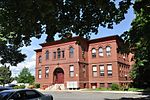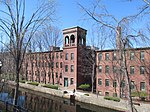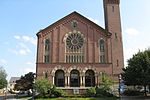Paulo Freire Social Justice Charter School
2013 establishments in MassachusettsAC with 0 elementsCharter schools in MassachusettsEducational institutions established in 2013Massachusetts school stubs ... and 3 more
Public high schools in MassachusettsSchools in Chicopee, MassachusettsSchools in Holyoke, Massachusetts
Paulo Freire Social Justice Charter School is a public charter high school in Chicopee, Massachusetts. Its main focus is the social and emotional well-being of its students. The school was located in Holyoke, Massachusetts from its founding in 2013 until the end of the 2018–19 school year.
Excerpt from the Wikipedia article Paulo Freire Social Justice Charter School (License: CC BY-SA 3.0, Authors).Paulo Freire Social Justice Charter School
Springfield Street, Chicopee
Geographical coordinates (GPS) Address Phone number Website Nearby Places Show on map
Geographical coordinates (GPS)
| Latitude | Longitude |
|---|---|
| N 42.1459 ° | E -72.605 ° |
Address
Pope Francis High School
Springfield Street 134
01013 Chicopee
Massachusetts, United States
Open on Google Maps











